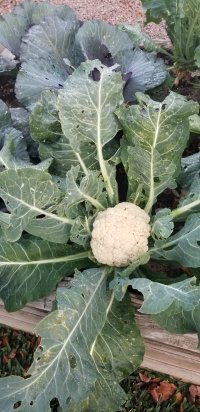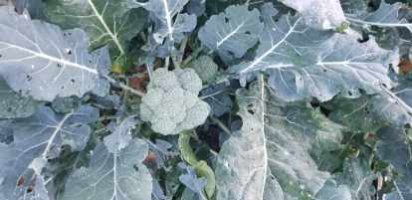- Joined
- Aug 17, 2021
- Messages
- 42
- Climate
- Temperate (all seasons)
I hope all is well with everyone. It's been a La Nina fall for sure, mild for the most part, but great for my garden. We're eating baked Cauliflower, Broccoli, Radishes and Turnips tonight. With some Green Chili cheese and whatever else the wife throws on them. Attached are some pictures of some of what I mentioned. There's also some Cilantro with Parsley in the center, yellow and red Beets, Turnips, Lettuce, Kale, Cabbage, freshly planted Onions and other stuff.





